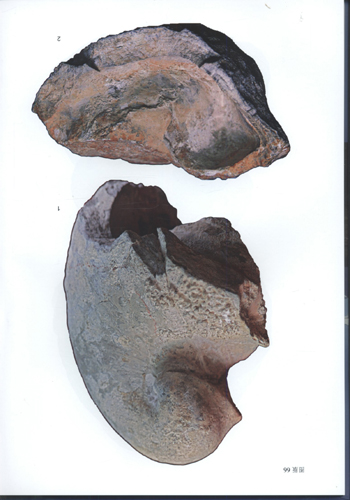- Description
- Contents
- Details
- Review
- The
author
The Late Triassic megalodontids are unusual group of molluscan bicalues.They are characterized by their large sizes,thick shell walls(hight ratio of hone/soft tissue) with massive hinge plates,and strong,amorphous intensive-protruding hinge tooth.And they are considered the typical fauna in the Tethys Realm.
The Qinghai-Xizang Plateau (Tibetan Plateau) is one of the few regions in the Late Triassic megalodontids are most widely distributed.Forty-three species belonging to 10 genra are and 2 Megalodontidac,including 1 endemic genus and 16 species in 7 genra and 2 families have been found in the study area.Among them,31 species in 7 genera are referred to Megalodontidae,including 1 endemic genus and 16 endemic species;whereas 12 species in 3 genera are referred to Dicerocardiidae,and among them 9 species are endemics.These fossils are distributed in the area among the Tanggula Mts.,Kunlun Mts.,Bayan Har Mts.,and Taniantaweng Mts.,with altitude of 4500 to 5400 meters(Figure 1).However,these fossils have not been found south to the Hengduan Mountains.Geotectonically,the Late Triassic megalodtid fossils are distributed in the Qamdo Landmass between the Ganzi-Litang Suture Zone and bangong Co-Nujiang River Suture Zone,south to which no fossils of this kind have ever been found so far.

Chapter 1 Introduction
Chapter 2 Distribution and taphonomic status of late Triassic megalodontids in western China
Chapter 3 Life habit and functional morphology of Late Triassic megalodontids
Chapter 4 Classification and evolution of Triassic megalodontids
Chapter 5 Palaeogeographic Significances of megalodontids
Chapter 6 Systematic Palaeontology
References
English Abstract
Explanation of Plates
Title in Pin Yin:
Publisher: Science Press
Edition: 1st Edition
Ebook availability: No
Book availability: in Stock
Published in: Beijing, China
Printed in:
Domestic Book Number:
Yao Huazhou, Zhang Renjie, Wang Jianxiong and Niu Zhijun from Wuhan Center of China Geological Survey, China
Sha Jinggen and Duan Qifa from Nanjing Institute of Geology and Palaeontology, Chinese Academy of Sciences , China
|